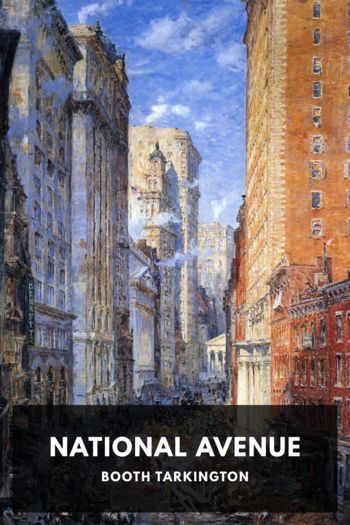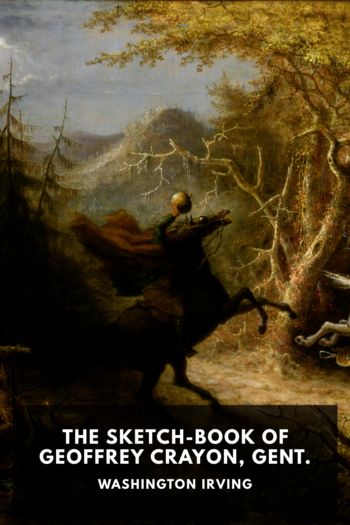Enchanted Evenings:The Broadway Musical from 'Show Boat' to Sondheim and Lloyd Webber by Block, Geoffrey (good story books to read .TXT) 📕

Read free book «Enchanted Evenings:The Broadway Musical from 'Show Boat' to Sondheim and Lloyd Webber by Block, Geoffrey (good story books to read .TXT) 📕» - read online or download for free at americanlibrarybooks.com
Read book online «Enchanted Evenings:The Broadway Musical from 'Show Boat' to Sondheim and Lloyd Webber by Block, Geoffrey (good story books to read .TXT) 📕». Author - Block, Geoffrey
Analytical Issues
The principal analytical question raised in this survey is how music and lyrics serve, ignore, or contradict dramatic themes and ideas, both in specific scenes and in the shows as a whole. Although this study will only infrequently treat music autonomously, a major factor behind the selection of the shows surveyed is the widely appreciated musical richness and enduring appeal of their scores. In contrast to most previous surveys, in which music is neglected beyond unhelpful generalities about its power to convey mood, music in this study will emerge as an equal (and occasionally more than equal) partner to the other components of a show, including lyrics, librettos, choreography, and stage direction.
Even when a musical is seemingly distinguished more by self-contained rather than integrated songs, the relationship of music and lyrics and music’s power to express dramatic themes will be a central aesthetic issue for each musical. While some admiration will be reserved for those musicals that approximate Joseph Kerman’s criteria for European operatic excellence, using music to define character and generate action as espoused in his Opera as Drama, other musicals considered with equal favor here do not accomplish this at all.11
The philosophical distinctions regarding text setting expressed by Peter Kivy apply also to the disparate approaches of Broadway musicals. As noted in the Preface to the First Edition, Kivy contrasts “the principle of textual realism,” in which the meanings of words are “interpreted” musically, “with another approach to the setting of texts … the principle of opulent adornment,” in which texts are set like precious jewels “hindered neither by the meaning nor the intelligibility of what he [the composer] ‘sets.’”12 The contrasting careers of Rodgers and Hart and Rodgers and Hammerstein represent these different approaches. Comparisons might suggest that something was lost as well as gained by the abandonment of cleverness, wit, and autonomous memorable tunes (Kivy’s “opulent adornment” of words) in favor of integrated and more operatically constructed musicals filled with such techniques such as leitmotivs, foreshadowing, thematic transformation, and classical borrowings, however convincingly employed for various dramatic purposes (Kivy’s “textual realism”).
The language of the analysis is intended to be accessible to readers unversed in musical vocabulary. For this reason harmonic details will receive less emphasis than melodic and rhythmic aspects. Some of the shows discussed here adopt techniques analogous to those practiced in the operas of Mozart, Verdi, and Wagner, and the book is based on the premises that for some musicals, melodic and rhythmic connections and imaginative use of classical borrowings (for striking examples of the latter see West Side Story) audibly enrich the dramatic fabric, and that some knowledge of these connections might contribute to the appreciation and enjoyment of these works.
For readers who neither read music nor profess any musical discernment beyond knowledge of what they like, the intent here is that the lyrics that accompany most of the musical examples will provide an aid in figuring out the point and purpose of the analytical discussion without undue discomfort. Since for many, negotiating musical terminology of any kind is an ordeal, occasionally even rudimentary concepts, including intervals, rhythmic note values, and the idea of central and hierarchical key relationships, will need to be explained. Although the attempt to create a text suitable for a “Broadway audience” unaccustomed to musical terminology may inevitably lead to some oversimplification from the perspective of theorists and musicologists, it is nevertheless the goal that something meaningful and new can be gained for this audience as well. In nearly all cases the focus will be on those musical features that can actually be heard, and on the musical expression of dramatic meanings and dramatic context.
The Making of a Musical, Adaptation, and Social Issues
How is a musical created and how does knowledge of compositional process, including the revisions made during out-of-town tryouts, lead to a better understanding and appreciation of the works we see and hear today? How were the composers, lyricists, and librettists, our principal subjects, influenced by directors, choreographers, producers, and audiences? How did the creators of these shows achieve a balance between artistic and commercial control of their work?
Although a knowledge of a musical’s compositional process can provide partial answers to these questions, the study of how a musical evolves from pre-compositional discussions, early sketches, and drafts to opening night and subsequent revivals has not been widely explored in the literature on Broadway.13 In fact, this book is the first to do so over a broad spectrum of the field. Sometimes the creative problems posed by musicals seem to find solutions by opening night or shortly thereafter; other problems remain for the life (and afterlife) of the show. When source materials permit this type of an inquiry—and some musicals were selected for this survey in part because they left conspicuous paper trails—the present study will examine how unpublished compositional materials (such as early libretto and lyric drafts, musical sketches, and letters) support or contradict more widely available published memoirs, interviews, and retrospective panels of creative participants.
One common denominator that links most of the musicals discussed in this survey is the practice, ubiquitous after Oklahoma!, of adapting a literary source for the musical stage (see “Sources, Published Librettos, and Vocal Scores” in the online website). Three adaptations that contend with formidable antecedents are explored at some length. The chapters on these shows will examine how and why these famous plays were adapted for new audiences in a new medium and how they preserved (Kiss Me, Kate and West





Comments (0)